Abstract
This study examined the prevalence and correlates of pathological affect in Alzheimer's disease. A consecutive series of 103 patients with Alzheimer's disease were examined with a comprehensive psychiatric assessment that included the pathological laughing and crying scale (PLACS). Forty patients (39%) showed pathological affect: 25% showed crying episodes, and 14% showed laughing or mixed (laughing and crying) episodes. Patients with pathological affect crying showed significantly higher depression scores and a significantly higher frequency of major depression and dysthymia than patients with no pathological affect. Patients with mixed pathological affect showed significantly more subcortical atrophy on CT than patients with pathological affect crying. Forty seven per cent of the patients with pathological affect had no congruent mood disorder, and they showed a significantly longer duration of illness and more severe anosognosia than patients with pathological affect that was congruent with an underlying mood disorder. The study validates the PLACS, and shows the high prevalence of pathological affect in Alzheimer's disease.
Full text
PDF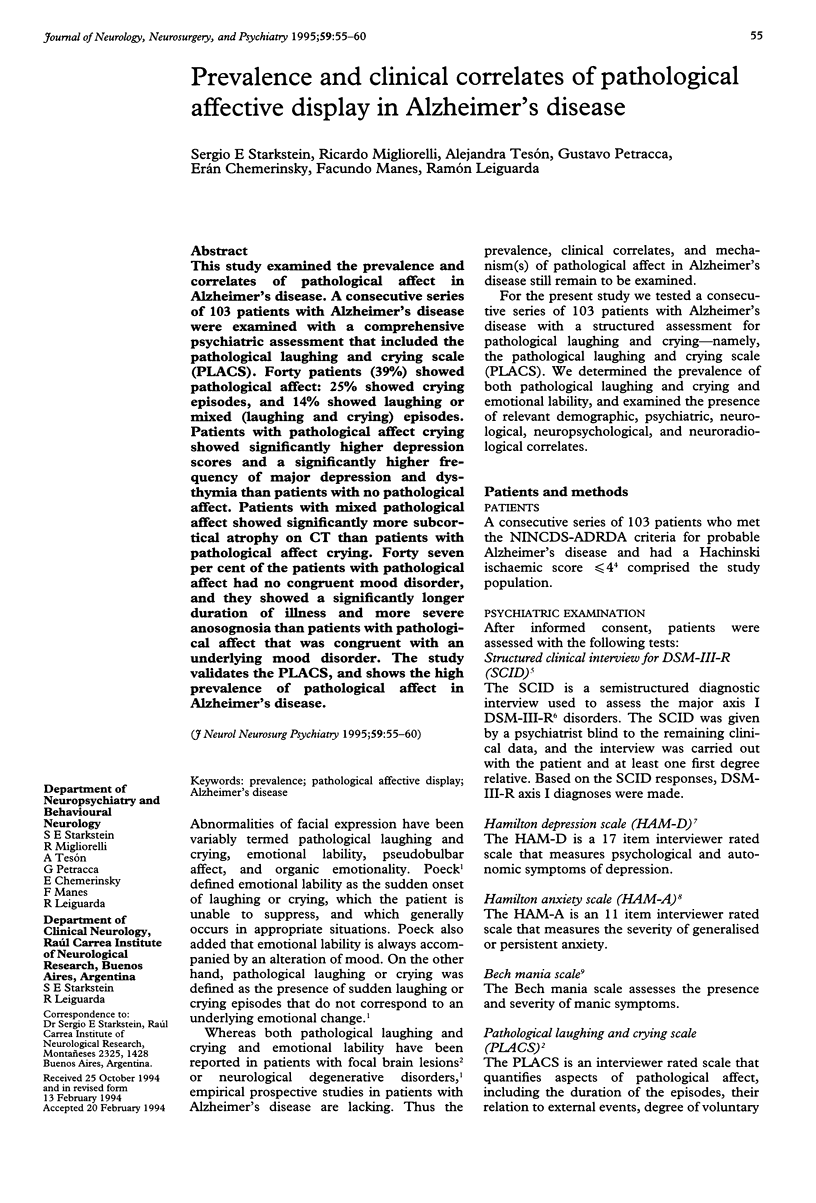
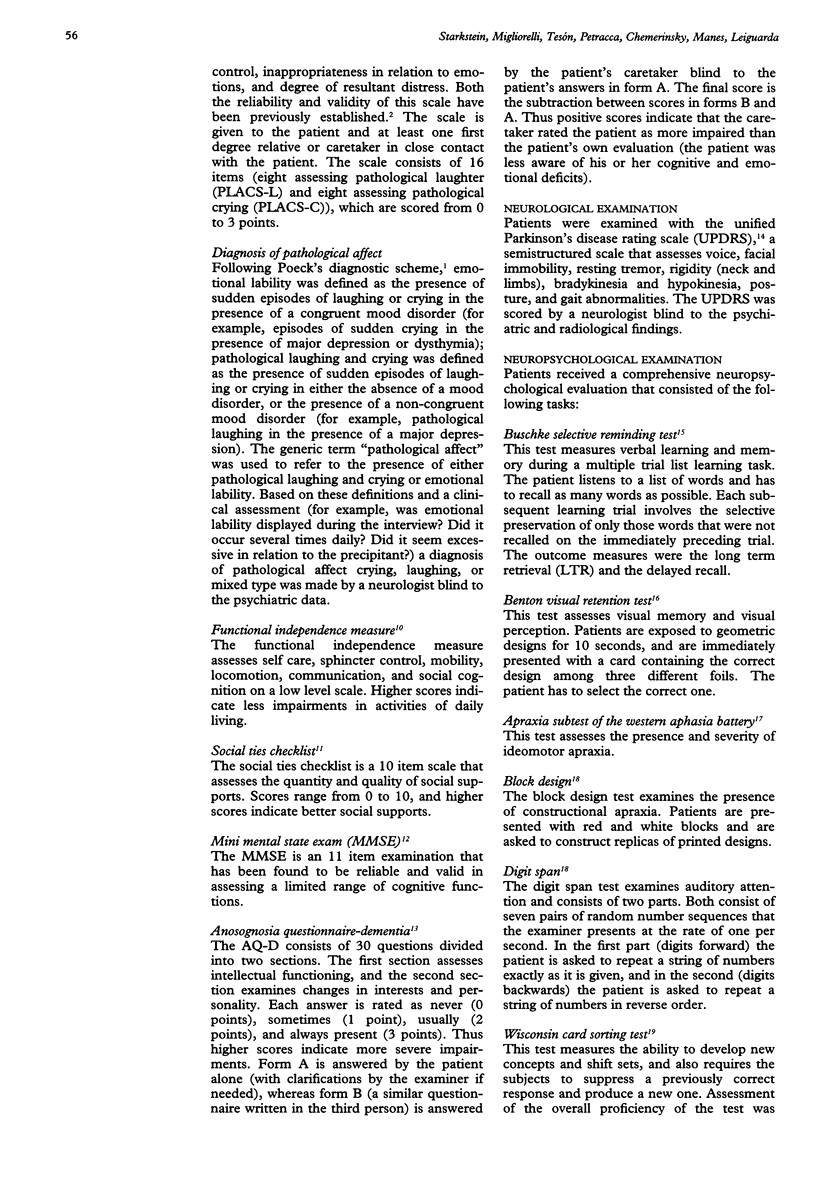
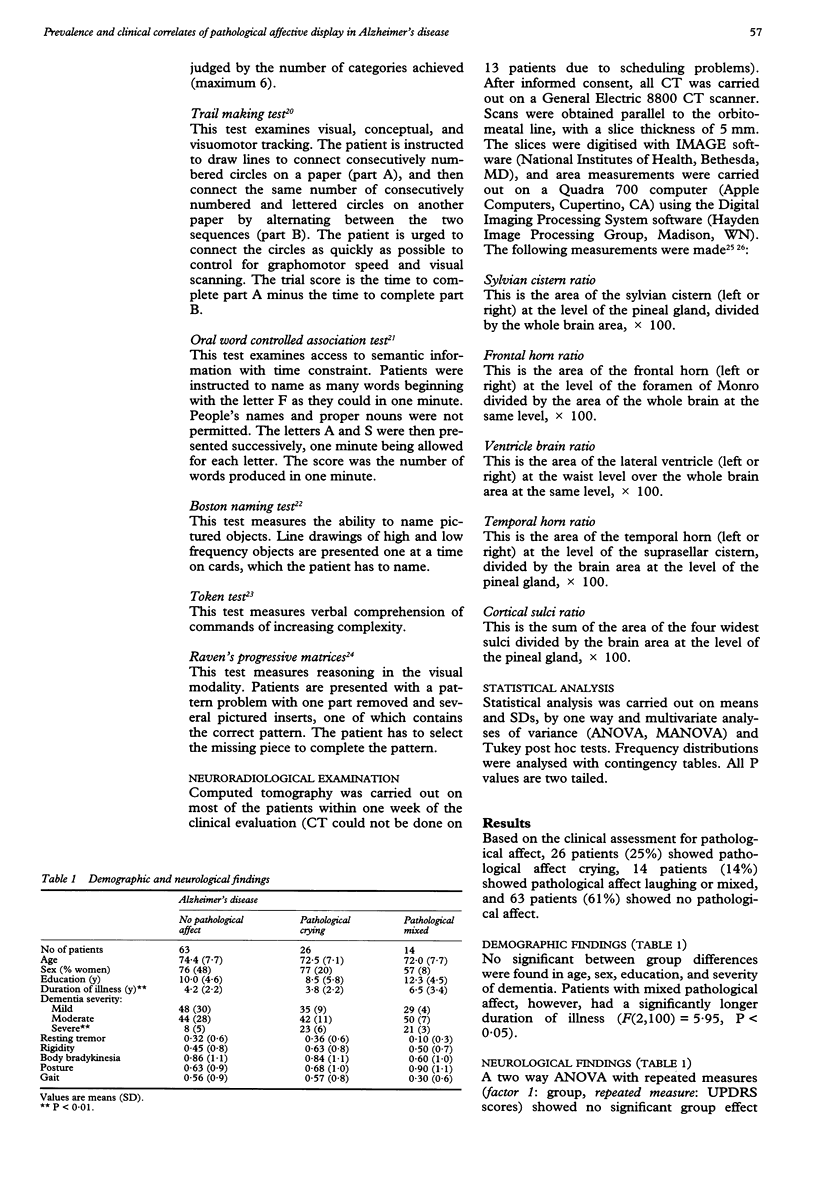
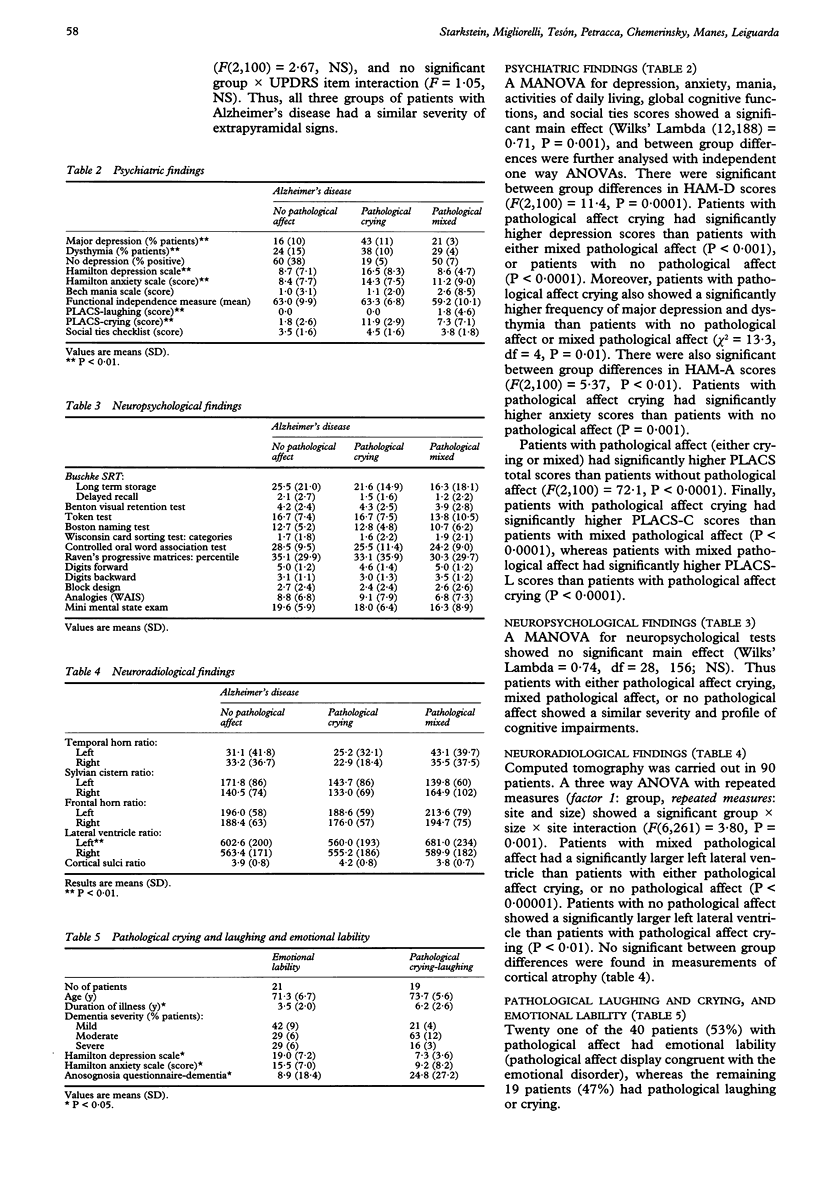
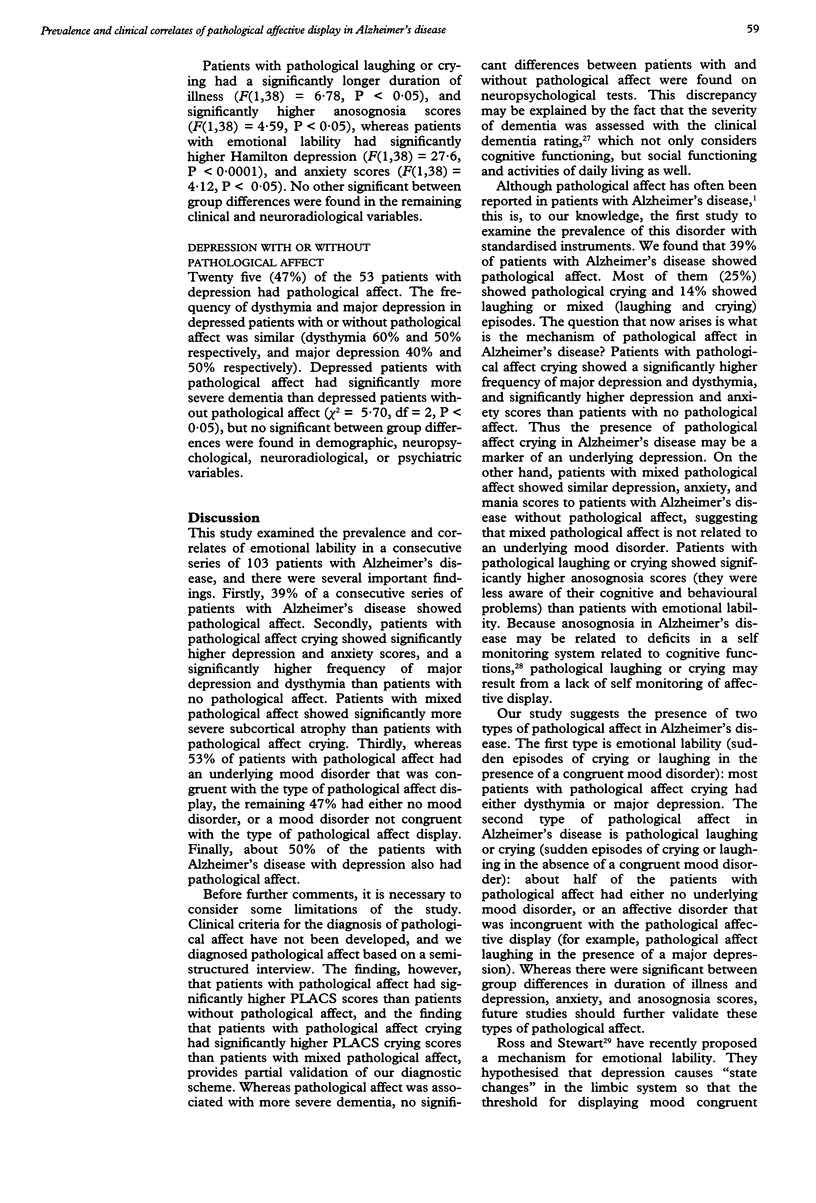
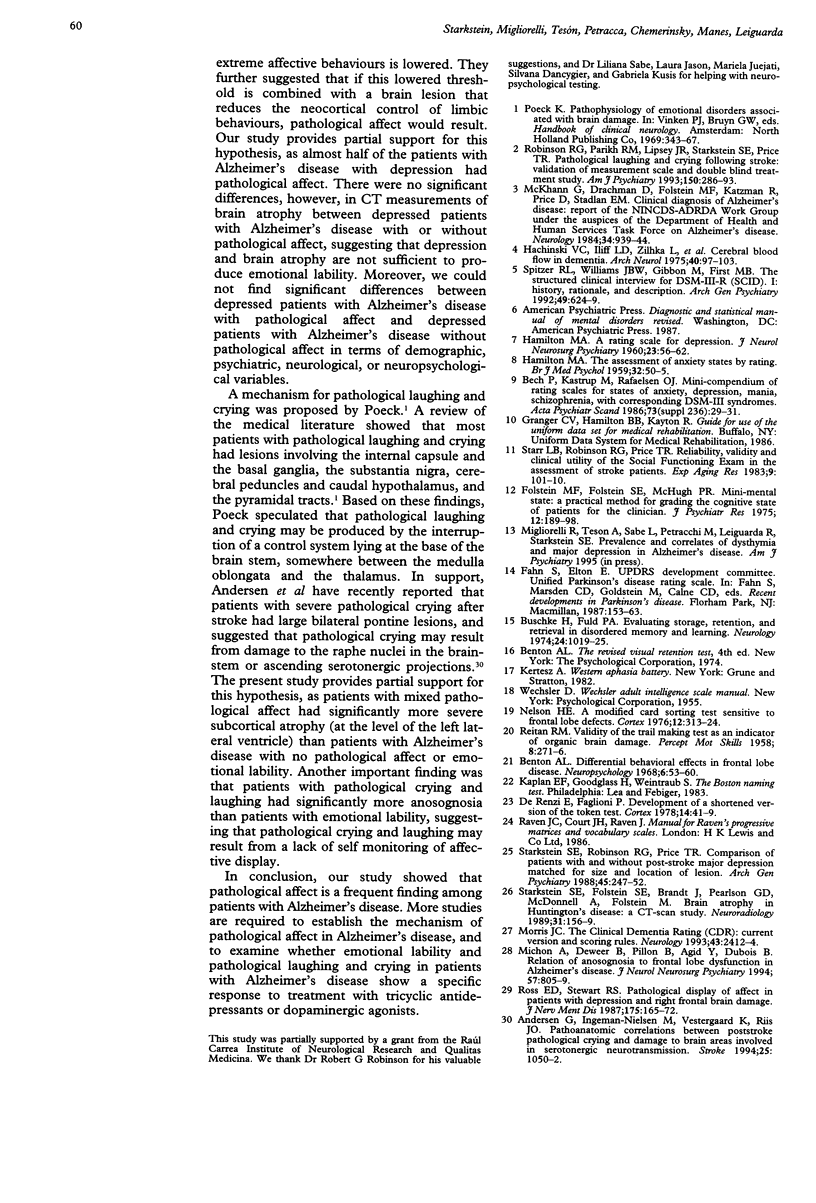
Selected References
These references are in PubMed. This may not be the complete list of references from this article.
- Andersen G., Ingeman-Nielsen M., Vestergaard K., Riis J. O. Pathoanatomic correlation between poststroke pathological crying and damage to brain areas involved in serotonergic neurotransmission. Stroke. 1994 May;25(5):1050–1052. doi: 10.1161/01.str.25.5.1050. [DOI] [PubMed] [Google Scholar]
- Buschke H., Fuld P. A. Evaluating storage, retention, and retrieval in disordered memory and learning. Neurology. 1974 Nov;24(11):1019–1025. doi: 10.1212/wnl.24.11.1019. [DOI] [PubMed] [Google Scholar]
- De Renzi E., Faglioni P. Normative data and screening power of a shortened version of the Token Test. Cortex. 1978 Mar;14(1):41–49. doi: 10.1016/s0010-9452(78)80006-9. [DOI] [PubMed] [Google Scholar]
- Folstein M. F., Folstein S. E., McHugh P. R. "Mini-mental state". A practical method for grading the cognitive state of patients for the clinician. J Psychiatr Res. 1975 Nov;12(3):189–198. doi: 10.1016/0022-3956(75)90026-6. [DOI] [PubMed] [Google Scholar]
- HAMILTON M. A rating scale for depression. J Neurol Neurosurg Psychiatry. 1960 Feb;23:56–62. doi: 10.1136/jnnp.23.1.56. [DOI] [PMC free article] [PubMed] [Google Scholar]
- McKhann G., Drachman D., Folstein M., Katzman R., Price D., Stadlan E. M. Clinical diagnosis of Alzheimer's disease: report of the NINCDS-ADRDA Work Group under the auspices of Department of Health and Human Services Task Force on Alzheimer's Disease. Neurology. 1984 Jul;34(7):939–944. doi: 10.1212/wnl.34.7.939. [DOI] [PubMed] [Google Scholar]
- Michon A., Deweer B., Pillon B., Agid Y., Dubois B. Relation of anosognosia to frontal lobe dysfunction in Alzheimer's disease. J Neurol Neurosurg Psychiatry. 1994 Jul;57(7):805–809. doi: 10.1136/jnnp.57.7.805. [DOI] [PMC free article] [PubMed] [Google Scholar]
- Morris J. C. The Clinical Dementia Rating (CDR): current version and scoring rules. Neurology. 1993 Nov;43(11):2412–2414. doi: 10.1212/wnl.43.11.2412-a. [DOI] [PubMed] [Google Scholar]
- Nelson H. E. A modified card sorting test sensitive to frontal lobe defects. Cortex. 1976 Dec;12(4):313–324. doi: 10.1016/s0010-9452(76)80035-4. [DOI] [PubMed] [Google Scholar]
- Robinson R. G., Parikh R. M., Lipsey J. R., Starkstein S. E., Price T. R. Pathological laughing and crying following stroke: validation of a measurement scale and a double-blind treatment study. Am J Psychiatry. 1993 Feb;150(2):286–293. doi: 10.1176/ajp.150.2.286. [DOI] [PubMed] [Google Scholar]
- Ross E. D., Stewart R. S. Pathological display of affect in patients with depression and right frontal brain damage. An alternative mechanism. J Nerv Ment Dis. 1987 Mar;175(3):165–172. doi: 10.1097/00005053-198703000-00007. [DOI] [PubMed] [Google Scholar]
- Spitzer R. L., Williams J. B., Gibbon M., First M. B. The Structured Clinical Interview for DSM-III-R (SCID). I: History, rationale, and description. Arch Gen Psychiatry. 1992 Aug;49(8):624–629. doi: 10.1001/archpsyc.1992.01820080032005. [DOI] [PubMed] [Google Scholar]
- Starkstein S. E., Folstein S. E., Brandt J., Pearlson G. D., McDonnell A., Folstein M. Brain atrophy in Huntington's disease. A CT-scan study. Neuroradiology. 1989;31(2):156–159. doi: 10.1007/BF00698845. [DOI] [PubMed] [Google Scholar]
- Starkstein S. E., Robinson R. G., Price T. R. Comparison of patients with and without poststroke major depression matched for size and location of lesion. Arch Gen Psychiatry. 1988 Mar;45(3):247–252. doi: 10.1001/archpsyc.1988.01800270061007. [DOI] [PubMed] [Google Scholar]
- Starr L. B., Robinson R. G., Price T. R. Reliability, validity, and clinical utility of the social functioning exam in the assessment of stroke patients. Exp Aging Res. 1983 Summer;9(2):101–106. doi: 10.1080/03610738308258434. [DOI] [PubMed] [Google Scholar]


